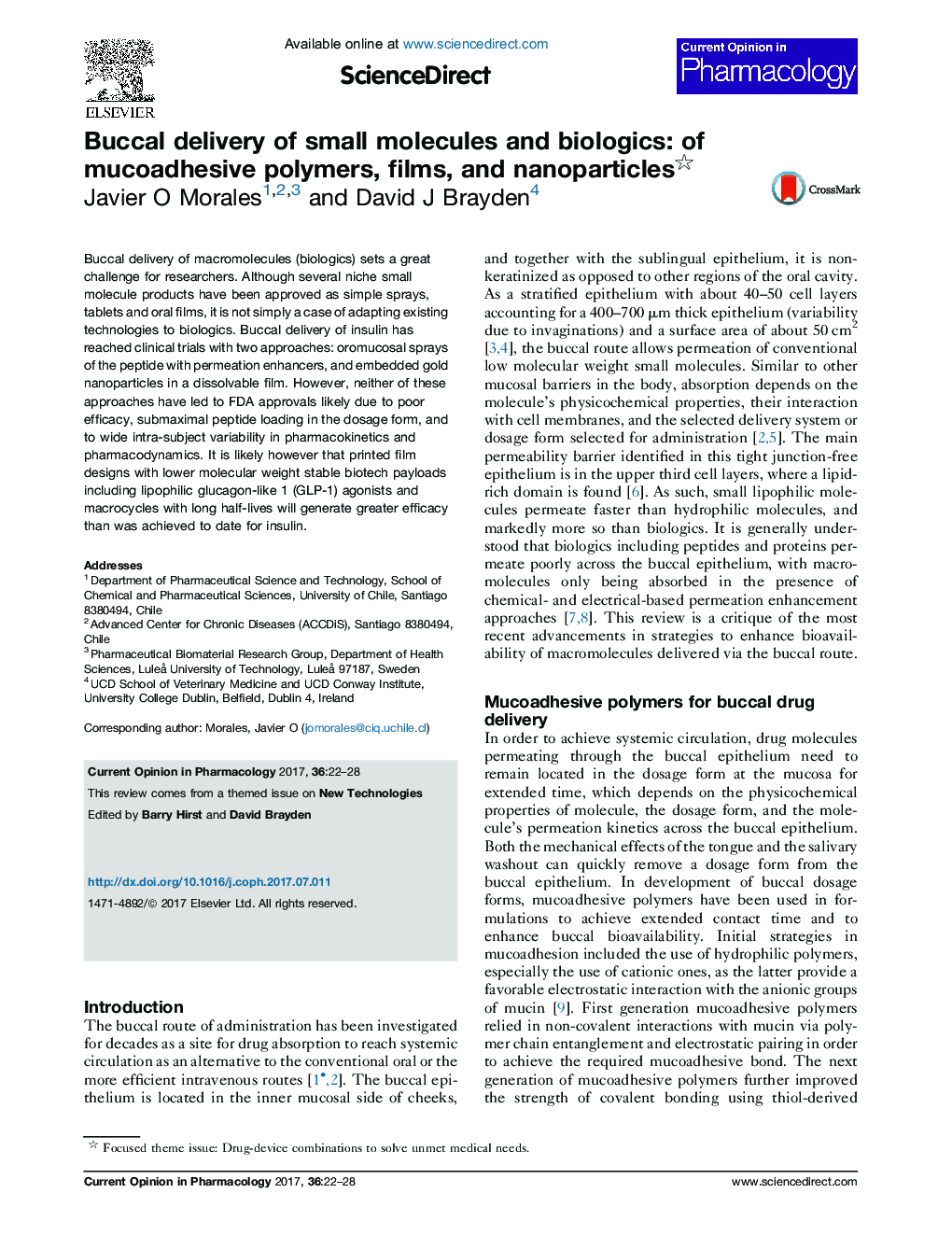| Article ID | Journal | Published Year | Pages | File Type |
|---|---|---|---|---|
| 5554250 | Current Opinion in Pharmacology | 2017 | 7 Pages |
â¢The buccal route has been exploited for selected potent small molecules.â¢Research to achieve buccal insulin delivery is based on avoiding the GIT.â¢Buccal insulin clinical trials have led to variable results with no FDA approvals.â¢There is a rationale for buccal delivery of glucagon-like peptide 1 analogues.â¢Development of printed films is timely and offer an opportunity for complex systems.
Buccal delivery of macromolecules (biologics) sets a great challenge for researchers. Although several niche small molecule products have been approved as simple sprays, tablets and oral films, it is not simply a case of adapting existing technologies to biologics. Buccal delivery of insulin has reached clinical trials with two approaches: oromucosal sprays of the peptide with permeation enhancers, and embedded gold nanoparticles in a dissolvable film. However, neither of these approaches have led to FDA approvals likely due to poor efficacy, submaximal peptide loading in the dosage form, and to wide intra-subject variability in pharmacokinetics and pharmacodynamics. It is likely however that printed film designs with lower molecular weight stable biotech payloads including lipophilic glucagon-like 1 (GLP-1) agonists and macrocycles with long half-lives will generate greater efficacy than was achieved to date for insulin.
Graphical abstractDownload high-res image (152KB)Download full-size image
